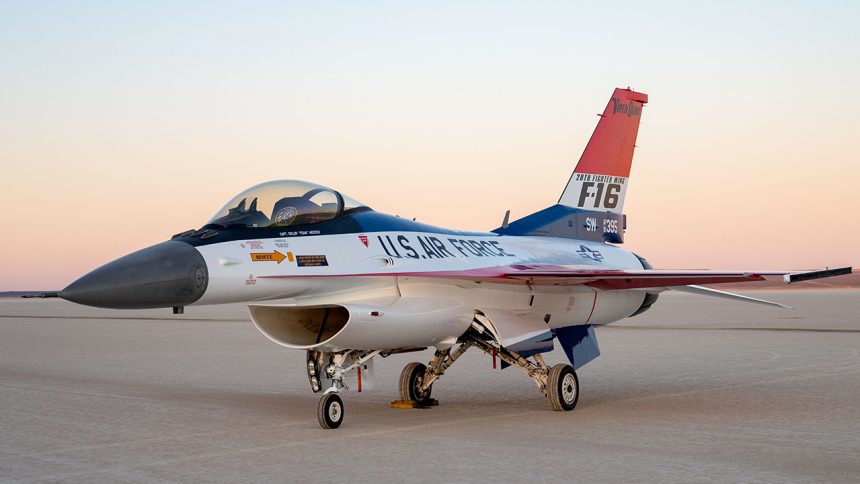The red, white and blue paint scheme was the original livery worn by the YF-16 prototype first flown in 1974.
On May 15, 2024, the U.S. Air Force F-16 Viper Demonstration Team revealed a special 50th-anniversary paint scheme at Edwards Air Force Base, California. The red, white, and blue design, replicates the livery of the YF-16 prototype, which first flew in 1974. The team collaborated with the 412th Test Wing to finish the paint job in under eight weeks, a process that normally takes about three months.
“When I was hired to be the commander and pilot in the summer of last year, I had made it known that I hoped to find a way to get our airplane painted in the prototype scheme to take America back to the beginning of the story that started 50 years ago,” said Capt. Taylor “FEMA” Hiester, commander and pilot of the F-16 Viper Demonstration Team.
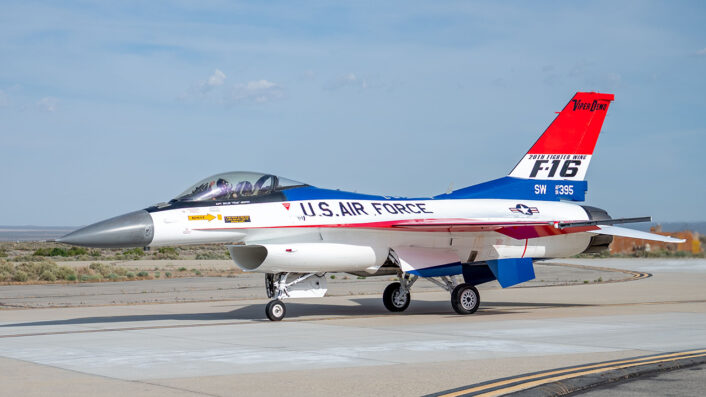
Tony Accurso, a logistics manager for the 416th Flight Test Squadron, Air Force veteran, and director of the Edwards AFB F-16 50th Anniversary event, acted as a liaison between the team and the 412th Test Wing. He contributed his enthusiasm and extensive knowledge of the YF-16 prototype as a historical advisor, helping to bring the design to fruition.
“The importance of this YF-16 paint scheme is celebrating 50 years of the F-16 Viper,” said Accurso. “Everyone at Edwards takes great pride in supporting the Viper Demo Team and celebrating the F-16’s 50th anniversary, which began here in 1974.”
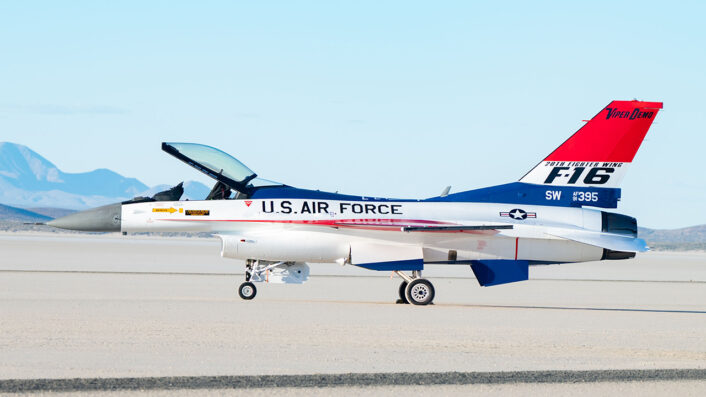
To distinguish the new aircraft from the original YF-16, the team made slight modifications to the original design, such as replacing “General Dynamics” with “20th Fighter Wing” and adding “Viper Demo” to the vertical stabilizer tip.
“The project was possible due to the support of the 20th Fighter Wing leadership, who believed in the project’s significance and shared our vision,” Hiester said.
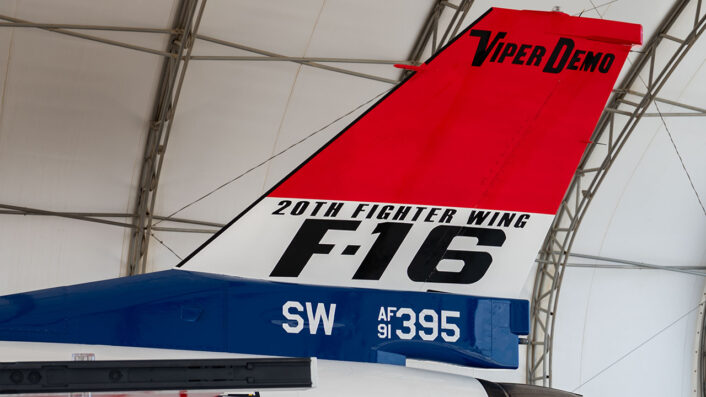
You can read a great interview with Captin Hiester on The War Zone.
In 2024, the F-16 Viper Demonstration Team will showcase Air Combat Command and the Air Force at 25 events across four countries, celebrating the F-16 Fighting Falcon’s 50th anniversary.
View this post on Instagram
The YF-16
On January 20, 1974, test pilot Phil Oestricher took the YF-16 No.1 onto the runway at Edwards Air Force Base, California, for a high-speed taxi test up to 135 knots. This test aimed to evaluate the pre-takeoff handling characteristics before the scheduled first flight, set for two weeks later. However, events unfolded differently as Oestricher had to lift off to save the aircraft after a series of large oscillations caused it to bounce multiple times on the main landing gear and strike the runway with the right horizontal stabilizer.
“We’d progressively taxied the airplane faster and faster and wanted to get a better idea of how it handled,” explained Oestricher. “Few people know this, but we actually intended to lift the airplane off the ground that day. Our intention was to move the throttle to military power for a few seconds and let the main gear come up a couple of feet while we went down the runway.”
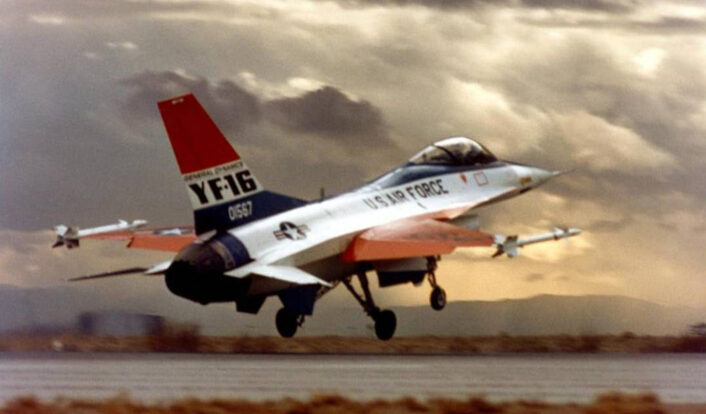
“We encountered two problems,” Oestricher continued. “First, the roll control was too sensitive, too much roll rate as a function of stick force. Second, the exhaust nozzle control for the prototype was wired incorrectly. You had to be on the ground for the nozzle to be wide open, so as soon as you took the weight off the wheels, the nozzle closed and essentially doubled the thrust at idle.”
To prevent losing the aircraft, Oestricher increased the power and took off, safely landing six minutes later after flying a wide circuit around the runway. Engineers resolved the control issue by that evening, while repairs took a bit longer, allowing the first flight to proceed as scheduled two weeks later, on February 2.
On January 13, 1975, the U.S. Air Force declared the YF-16 the winner of the competition due to its lower operating costs, greater range, and superior maneuver performance compared to the YF-17, as well as its use of the same P&W F100 engine as the F-15 Eagle. A few months later, the YF-17 won a similar competition and was further developed into the F-18 Hornet.
The YF-16 was also further developed, with the first F-16A flying on December 8, 1976. The Air Force planned to order up to 1,400 aircraft, with the first entering operational service at Hill AFB, Utah, on October 1, 1980. Meanwhile, in 1975, Belgium, Denmark, the Netherlands, and Norway ordered 348 aircraft as part of the European Participation Air Forces, leading to the establishment of two European production lines.
Ultimately, the “Viper,” as the F-16 is nicknamed by its crews, grew over the years to become the world’s most numerous fighter in service today, with an active fleet of more than 2,100 aircraft in 25 countries, or 2,800 when including training aircraft and non-combat roles.
The F-16 has been the backbone of the U.S. Air Force, with 935 aircraft in service, accounting for 50% of the service’s fighter inventory.
The F-16 has accumulated an estimated 19.5 million flight hours and at least 13 million sorties. About 4,600 F-16s have been built, and the production line is still active, with a backlog of 140 still to be produced. Today’s Viper, however, is a completely different machine, the result of 50 years of evolution that has transformed the F-16 from its initial light-weight day fighter concept into the current multi-role fighter jet.

